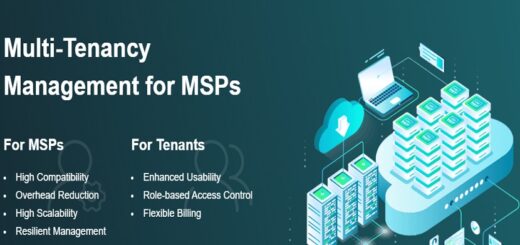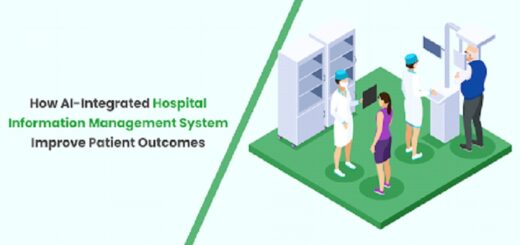Top Java Frameworks to Watch in 2024: Enhancing Your Development Workflow
Stepping into the year 2024, there have been a lot of changes concerning the frameworks used for Java development and the main aim of this paper is to discuss some of the frameworks that are common and their importance in the development process. From the highly flexible and general-purpose Spring Framework to the high-performance Hibernate ORM, all these tools in their own right are not only meeting the challenges face to face, but are also laying down new standards. This blog post will focus on discussing the best Java frameworks that will be popular in 2024 with emphasis on their features, advantages and how it will enhance your performance in developing dependable applications. For the new developers or even the old hats who might not be in the loop with everything about Java development, it is paramount to note that these frameworks will help put you on this update path.
Introduction
What Are Java Frameworks?
Java frameworks are pre-stocked codes through which one is able to develop his or her applications with less struggle. These provide developers with different reusable components and tools that are very helpful to cater other frameworks and platforms by providing to the developers ready-made basic application frameworks, which save the people time to develop basics applications where as other platforms and frameworks force their users to code most of the functionality of the applications again and again. The significance of Java Frameworks in the Current World of Applications Developments
Java frameworks are crucial in modern application development because they:Java frameworks are crucial in modern application development because they:
- Enhance Productivity: Frameworks are more efficient than coding directly on the application because of aspects such as pre-built modules and tools of the framework decreasing the amount of time to develop.
- Ensure Consistency: They share good practices, and set a methodology for the development, which results in more maintainable code and increases scalability.
- Improve Security: Some of the specified frameworks contain source code protection and subsequently secure reactions against regular risks of applications.
- Importance of Java frameworks in modern application development
Overview of different types of Java frameworks (web, enterprise, data access, etc.)
- Web Frameworks: These frameworks, for example Spring MVC and JSF are meant to be used in the development of web applications. They make request handling, manage sessions and include functions like template engines for HTTP.
- Enterprise Frameworks: Java frameworks like Spring and Java Transactional API and Java Enterprise Edition are applied to develop complex and scalable applications and services, which are distributed and have to perform transactional actions. Some of the services it provides are dependency injection, manager for transactions, and messaging.
- Data Access Frameworks: Frameworks like hibernate and MyBatis are examples of frameworks that make the process of interacting with the database much easier. They offer Object-Relational Mapping (ORM) to tie down a Java result to a database table.
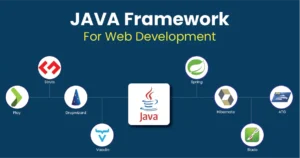
Java frameworks role in modern development
In modern development, Java frameworks play a pivotal role by:In modern development, Java frameworks play a pivotal role by:
- Facilitating Rapid Development: They allow the developers to easily create and launch applications since they come packaged with pre coded frameworks.
- Supporting Microservices Architecture: Tools and technologies such as Spring Boot have been designed to support the microservices architecture promoting for instance modularity.
- Enhancing Performance: Frameworks aid in the development of high performing applications by showing programme developers how best to manage and allocate resources and provide effective means of managing data.
As will be clear by now, it is impossible to consider building any application, let alone a large and complex one in 2024 and beyond, without employing these frameworks.
What is the Java agent development framework?
The Java Agent Development Framework (JADE) is a software framework fully implemented in Java, designed to simplify the development of multi-agent systems. It provides a middleware that complies with the FIPA specifications and includes tools for debugging and deployment. JADE supports peer-to-peer agent communication, task execution, and composition, making it easier to build distributed systems.
Popular Java Frameworks in 2024
Here are some Popular frameworks in 2024 for review.
1: Spring Framework and Spring Boot

Spring Framework and Spring Boot are Java platforms with lots of features for developing enterprise applications. Spring Framework comprises a rich set of tools and APIs for diverse application development activities, whereas Spring Boot makes it easy to create powerful production grade Spring based applications quickly.
- Core Concepts and Benefits: The Spring Framework is a general-purpose lightweight framework which facilitates Java development in enterprise applications. It has features such as dependency injection, aspect oriented programming and transactions that aid in developing complex and sustainable applications.
- Spring Boot for Rapid Application Development: It is a powerful tool, which enhances and eases the creation of new Spring ‘projects’ or ‘applications’ by offering numerous default settings and numerous possible starter projects. It allows the creation and the deployment of the production version of an application at a very short period of time.
- Spring MVC for Web Applications: Spring MVC is a web framework in Spring Kingdom that is based on an MVC designing pattern called Model View Controller. It is useful in enhancing web applications’ scalability and maintainability since it avoids code combination.
- Spring Data for Data Access: Spring Data is a powerful module of Spring Framework that enhances data access with fantastic and straightforward APIs for many kinds of data storage, from the traditional relational database to the newest NoSQL database.
- Spring Cloud for Microservices Architecture: Spring Cloud supports developers to create microservice architectures in an easy way. It provides features such as configuration management, service discovery, circuit breakers as well as distributed tracing.
- Use Cases and Real-World Applications: Spring Framework and Spring Boot extensively used in enterprise applications, E-commerce platforms, Microservices architectures etc. due to several factors including modularity, scalability and interoperability.
2: Hibernate
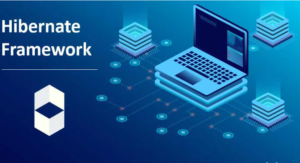
Another important Java framework is Hibernate that allows the creation of new Java applications with simplicity due to the fact that this framework has a mechanism for mapping Java objects and database tables. It is an ORM framework that is a light-weighted open source framework that supports specifications of JPA for data persistence.
- Object-Relational Mapping (ORM): Object-Relational Mapping (ORM) is a technique that makes developers work with a relational database in object-oriented manner. Other development frameworks such as Hibernate allow the mapping of the Java objects to tables in order that developers use the object-oriented APIs to manipulate the database without having to write raw SQL statements.
- Advantages of Using Hibernate: Some of the features of Hibernate include automatic table creation, caching and lazy loading that are meant to enhance performance and minimise coding.
- Core Concepts and Features: Some of the main ideas that may be discussed in Hibernate are SessionFactory, Session, and Transaction. These components control several processes and sessions of the database operations and integrity.
- Overview of ORM (Object-Relational Mapping): Hibernate for example is an ORM framework that acts as a middle layer between object oriented programming languages and relational databases to help a programmer work interact with objects instead of records of a database.
- Advantages of Using Hibernate for Database Management: Based on the properties of Hibernate it is the effective tool for database management in the context of enterprise applications or other large systems, which often require managing complicated queries, relations and transactions.
- Improved Productivity: Hibernate thus encourages developers to spend more time in writing business logics because it handles the tedious work that comes with databases thus boosting development rates.
- Enhanced Performance: Techniques like cache control and lazy loading and techniques to avoid more database hits are some of the ways that enhance database activity and the overall performance of the application.
- Scalability: This makes hibernate to be designed for working in a clustered environment, it is therefore appropriate for large-scale, distributed applications.
- Flexibility: Hibernate is compatible with multiple protocols, and relatively easy to fit into other Java frameworks; it is a fairly good approach, with versatile solutions for different applications.
3: Apache Struts
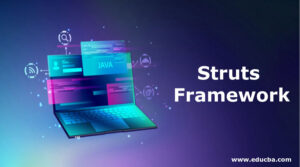
Apache Struts is J2EE free, open-source framework to develop JAVA web applications. It also uses Model-View-Controller (MVC) architectural pattern that aids in differentiating the logic of application, the view of the application as well as the control flow of the application. Struts is extensible via and includes plugins for next generation Web technologies like REST, AJAX and JSON.
About MVC Architecture and Why It Is Essential
Model-View-Controller (MVC) is a design pattern that divides an application into three interconnected components:
- Model: Reflects the application’s data and its logic.
- View: By doing so it shows the data (GUI).
- Controller: With the help of this controller, manages the user input and updates the Model and View simultaneously.
Benefits of MVC:
- Separation of Concerns: Every part is responsible for a certain section of the application, which is more convenient and efficient in terms of maintenance and development.
- Reusability: Due to the use of object-oriented technology the components can be used at other places of the application.
- Maintainability: Due to its clean division of labor, it is easier to take care of and update as compared to other models.
Key Features and Improvements in the Latest Version
The latest version of Apache Struts is 6.6.03.
Here are some key features and improvements:
- Enhanced Security: Regular updates to address security vulnerabilities.
- Improved Plugin Support: Better integration with modern web technologies like REST and AJAX.
- Performance Enhancements: Optimizations for faster processing and reduced memory usage.
- Extended Documentation: More comprehensive guides and examples to help developers get started quickly.
4: JavaServer Faces (JSF)
JavaServer Faces (JSF) is one of the Java specifications for creating the component based user interfaces for the Web applications. It makes the development process easier because it offers a palette of UI instances and a concept which addresses the lifecycle of these instances. JSF is one component of the Java EE platforms and is built especially to integrate with some other related Java technologies.
Component-Based UI Framework
JSF is a component-based UI framework; in other words, it is a framework for UI component based development, implying that the software designer can develop an interface with the help of several components, similar to buttons, text boxes, tables, etc. These components can be easily modified and can also be reused at different areas of the actual application. It generates and controls the state of these components, which means that the developer doesn’t have to bother about the HTML and JavaScript for the necessary building of intricate UIs.
Enhancements and New Features in 2024
In 2024, JSF has seen several enhancements and new features to improve developer productivity and application performance:
- Improved Integration with Modern Web Technologies: Better support for integrating with frameworks like Angular and React, allowing developers to leverage the strengths of both JSF and modern JavaScript frameworks.
- Enhanced Component Library: New and improved UI components, including more advanced data tables, charts, and form controls, providing richer user experiences.
- Performance Optimizations: Various optimizations to reduce server load and improve response times, making JSF applications faster and more efficient.
- Simplified Configuration: Reduced need for extensive configuration files, making it easier to set up and maintain JSF applications.
Emerging Java Frameworks
Micronaut
Micronaut is a lightweight and fast framework designed for building microservices and serverless applications. It is known for its minimal memory footprint and quick startup times, thanks to its Ahead-of-Time (AOT) compilation.
Key Features and Use Cases:
- Polyglot Framework: Supports Java, Groovy, and Kotlin.
- Cloud-Native: Built-in support for cloud services, discovery, and distributed tracing.
- Fast Data Access: Quick configuration for data access layers.
- Aspect-Oriented Programming: Simple API for compile-time aspect-oriented programming.
- Use Cases: Ideal for microservices, serverless applications, and cloud-native environments.
Quarkus
Quarkus is optimized for Kubernetes and cloud-native development. It aims to make Java a leading platform in Kubernetes and serverless environments by providing fast startup times and low memory usage.
Benefits and Real-World Examples:
- Container-First Approach: Designed to work seamlessly with containers.
- Reactive Programming: Supports reactive programming models.
- Developer Joy: Live coding and streamlined development experience.
- Real-World Examples: Used by organizations like Lufthansa and Vodafone for building scalable, cloud-native applications.
- Frameworks for Specific Needs
Vaadin
Vaadin is a framework for building modern web applications with Java. It provides a rich set of UI components and a server-side programming model.
Key Features and Advantages:
- Component-Based: Rich set of customizable UI components.
- Server-Side: Simplifies development by handling most of the client-server communication.
- Theming and Styling: Easy to customize the look and feel of applications.
- Advantages: Simplifies the development of complex web applications with a focus on user experience.
Dropwizard
Dropwizard is a framework for simplifying the development of RESTful web services. It bundles various libraries to provide a comprehensive setup for building web services.
Core Components and Benefits:
- Jersey: For building RESTful web services.
- Jetty: For running web servers.
- Metrics: For monitoring and metrics collection.
- Benefits: Provides a production-ready environment with minimal configuration, making it easier to develop and deploy web services.
Choosing the Right Java Framework
Factors to Consider When Selecting a Framework
- Project Requirements: Consider the specific needs of your project, such as performance, scalability, and ease of development.
- Community Support: A framework with a large and active community can provide better support and resources.
- Learning Curve: Choose a framework that matches your team’s expertise and experience.
Framework Comparison Based on Project Requirements
- Micronaut: Best for microservices and serverless applications.
- Quarkus: Ideal for cloud-native and Kubernetes environments.
- Vaadin: Suitable for building rich, interactive web applications.
- Dropwizard: Great for developing RESTful web services quickly.
Best Practices for Framework Selection
- Evaluate Performance: Test the framework’s performance with a sample project.
- Check Documentation: Ensure the framework has comprehensive and up-to-date documentation.
- Consider Future Needs: Think about the long-term maintenance and scalability of the framework.
Security and Performance Enhancements

Security and performance enhancements in Java frameworks focus on improving the robustness and efficiency of applications. These enhancements include updates to address security vulnerabilities and optimizations to boost application speed and reduce resource consumption.
Best Practices for Using Java Frameworks
Effective Use of Framework Features
Utilize the built-in features of Java frameworks to streamline development. For example, dependency injection in Spring can simplify object creation and management, while Hibernate’s ORM capabilities can ease database interactions.
Code Optimization and Performance Tuning
Optimize your code by using efficient algorithms and data structures. Profiling tools like VisualVM and JProfiler can help identify performance bottlenecks. Tuning JVM settings and minimizing object creation can also enhance performance.
Security Considerations
Implement security best practices such as input validation, secure authentication, and authorization mechanisms. Regularly update dependencies to mitigate known vulnerabilities.
Testing and Debugging
Use unit testing frameworks like JUnit and integration testing tools to ensure code quality. Debugging tools and logging frameworks can help identify and resolve issues quickly.
Integration with Other Technologies
Java frameworks often provide integration capabilities with other technologies. For example, Spring Boot can easily integrate with cloud services like AWS and Azure, while Hibernate can work with various databases.
Security Best Practices
Implementing Security in Java Frameworks
Use security features provided by frameworks, such as Spring Security for authentication and authorization. Ensure secure coding practices, like avoiding hard-coded credentials and using encryption for sensitive data.
Latest Security Features and Updates
Stay updated with the latest security patches and features. For instance, recent updates in Java frameworks include enhanced support for OAuth2 and improved encryption algorithms.
Performance Optimization
Techniques for Optimizing Java Applications
Optimize Java applications by using efficient memory management techniques, such as object pooling and minimizing garbage collection overhead. Use concurrent data structures for better performance in multi-threaded environments.
Tools and Frameworks for Performance Monitoring
Tools like JMH (Java Microbenchmarking Harness) and VisualVM can help monitor and improve application performance. These tools provide insights into memory usage, CPU load, and other performance metrics.
Integration and Interoperability
Integrating Java Frameworks
Combine multiple frameworks to leverage their strengths. For example, using Spring Boot with Hibernate for database operations and Apache Camel for integration tasks can create a robust application architecture.
Best Practices for Combining Multiple Frameworks
Ensure compatibility and avoid redundancy by clearly defining the roles of each framework. Use consistent configuration and dependency management practices.
Case Studies and Examples
Many enterprises use a combination of frameworks to build scalable applications. For instance, a company might use Spring Boot for microservices, Hibernate for ORM, and Apache Camel for integration.
Interoperability with Other Technologies
Java Frameworks and Cloud Services
Java frameworks like Spring Boot and Micronaut offer seamless integration with cloud services, enabling developers to build and deploy cloud-native applications efficiently.
Integration with Modern Front-End Technologies
Frameworks such as Vaadin provide tools for integrating Java backends with modern front-end technologies like Angular and React, enhancing the user experience.
Future Trends in Java Frameworks
Emerging trends include increased support for reactive programming, improved integration with cloud platforms, and enhanced security features.
Integration with Cloud Platforms and Serverless Architectures
Java frameworks are evolving to support serverless architectures and better integration with cloud platforms like AWS Lambda and Azure Functions.
AI and Machine Learning Integration in Java Frameworks
AI and machine learning are becoming integral to Java frameworks, with libraries and tools being developed to facilitate their integration into Java applications.
How AI is Shaping Java Frameworks
AI is driving the development of intelligent features in Java frameworks, such as automated code generation, predictive analytics, and enhanced data processing capabilities.
Future Predictions and Potential Developments
Future developments may include more robust support for microservices, enhanced security measures, and greater emphasis on sustainability and green computing.
Eco-Friendly Practices in Java Development
Adopt eco-friendly practices such as optimizing code for energy efficiency, using cloud resources judiciously, and minimizing wasteful computations.
Frameworks Supporting Sustainable Development
Frameworks like Spring and Micronaut are incorporating features to support sustainable development, such as efficient resource management and reduced carbon footprint.
Conclusion
In summary, mastering Java frameworks is crucial for any developer aiming to enhance their development workflow in 2024. Key frameworks like Spring, Hibernate, and Struts offer robust solutions for building scalable and efficient applications. By exploring and experimenting with different frameworks, developers can find the best tools to suit their specific project needs, ultimately boosting productivity and innovation. Embrace the versatility and power of these frameworks to stay ahead in the ever-evolving tech landscape.
